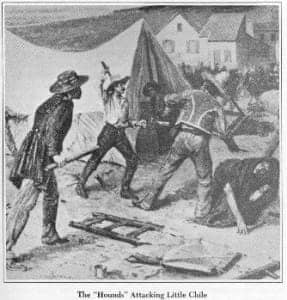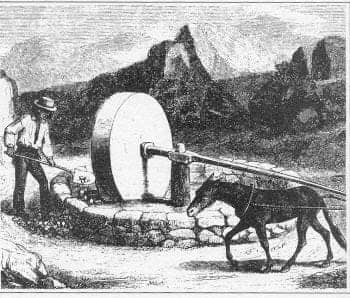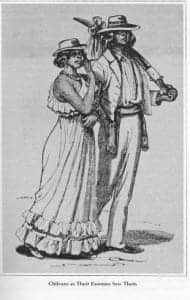A study of the manpower implications of small business financing
by Joseph Debro
A 1968 book-length report, titled “A Study of the Manpower Implications of Small Business Financing: A Survey of 149 Minority and 202 Anglo-Owned Small Businesses in Oakland, California,” was sent to the Bay View by its author, Joseph Debro, prior to his death in November 2013, and his family has kindly permitted the Bay View to publish it. The survey it’s based on was conducted by the Oakland Small Business Development Center, which Debro headed, “in cooperation with the small businessmen of Oakland, supported in part by a grant, No. 91-05-67-29, from the U.S. Department of Labor, Manpower Administration, Office of Manpower, Policy, Evaluation and Research.” Project co-directors were Jack Brown and Joseph Debro, and survey coordinator was Agustin Jimenez. The Bay View is publishing the report as a series. A prolog appeared in the December 2013 Bay View, Part 1 in January 2014, Part 2 in February, Part 3 in April, Part 4 in May, Part 5 in June, Part 6 in August, Part 7 in October, Part 8 in November, and this is Part 9 of the report.
The Mexican American as laborer and entrepreneur

In the late 19th and early 20th centuries, Americans of Spanish and Mexican descent remained concentrated in what had been the Spanish and Mexican colonial territories in the southwestern United States: Arizona, New Mexico, Colorado, Texas and California. During the Spanish and Mexican colonial regimes, these territorial possessions were only sparsely populated with missionaries, soldiers, a few ranchers and farmers, and very few persons of commerce and trade. Although the fact that these territories were largely ignored and underdeveloped made possible some easy, unnoticed intermixing of the Native and Mexican population with the European and American settlers, it primarily laid the foundation for the patterns of exploitation that were to be established in the years following American conquest.
California, under Spanish rule, was controlled by missionaries who exploited near-slave Indian labor as domestics and for production of their grain and bean crops. Convict laborers were used to teach crafts to the Indians in exchange for their freedom.
Cattle roamed wild, and the missions slaughtered these animals for their tallow and hides which were bartered for a few manufactured items from the English, Spanish, Russian and American vessels that sailed up the Pacific coast. The only towns that developed, outside of the mission settlements, were the coastal villages of Monterey, Los Angeles, San Francisco and San Diego, to which hides were brought for trade.
Money was never the principal medium of exchange during the Spanish period, since there were almost no merchants as such. The economic structure was, then, based upon simple barter and exchange, and little interest was shown in further development. California was little more than a forgotten outpost in the far-flung Spanish Empire.
The brief period of Mexican rule saw some developments and expansions of activities. Ranching was encouraged through land grants not only to Mexicans, but also to Americans and Europeans. Towns increased slightly in size and number. Commercial enterprises grew, particularly those surrounding trade of furs and cereals with the Far East, the United States and Europe.
Indian peonage legally came to an end during this period, although the Indian condition remained one of servitude as they continued to perform most of the hard physical labor for Spaniards, Mexicans, Europeans and Yankees. Yet in California, as in the Southwest as a whole, the relative unimportance to Mexico of the distant colonial realms was in sharp contrast with the great emphasis placed on the region’s potential by Americans, and conquest by the United States was relatively easy.

Once conquest was accomplished, the lack of a highly developed culture made it easy for American settlers to ignore, overrun and denigrate the existing population. In 1848, most of the Mexicans residing in California were native born, and consequently were automatically citizens of the United States under the Treaty of Guadalupe Hidalgo. Their lands and other property were to remain viable under this same treaty, and they were to receive equitable treatment before the law, being entitled to the same rights and obligations as other Americans. Yet their position deteriorated until they, like the Indian natives, were regarded as an undesirable but at times necessary minority group whose brawn (but not brain) was to be exploited.
When gold was discovered, Mexicans from Sonora were the only large group of people who knew anything about mining and so were welcomed by Yankee prospectors as mining teachers. During the initial period of discovery in 1848, the Sonorans, as well as a number of Chilean miners, were accepted, essential figures on the newly developed scene.
California Mexicans, too, played a major part in the mining operations during this first year, coming in parties from several rancheros with Indian servants to do digging in the mines. The gold fields appeared to be the place where a young son of a now-impoverished family of gente de razon (generally phenotypically white persons of Spanish or Mexican descent or those who could trace their ancestry to important families) might recoup his family’s fortune.
But trouble did not take long to begin. The relative peace of the early part of 1849 did not last when Americans and Europeans arrived in great numbers. The Yankee, initially so eager to listen to the Mexicans and Chileans for mining instructions, began to organize against all racial, national and ethnic groups which offered potential competition in San Francisco and in the mines.
By September 1849, a Bay Area newspaper advertised “none but Americans allowed” on the North and Middle Forks of the Stanislaus River (“San Francisco Alta California,” Sept. 18, 1849). Violence did not break out, however, until December of that year and January of the next, when a clash developed between Chileans and Yankees in the Calaveras diggings.
Hostilities against the dark-skinned Latin Americans were not confined to the mines. In the summer of 1849, the “Hounds,” a group of ruffians in San Francisco, were formed ostensibly for mutual assistance in times of distress and danger. Actually, however, the Hounds group was organized to shield its members against prosecution and arrest. The Hounds directed their attacks against Chileans and other Latin Americans, “who were beaten and maltreated in a most shameful manner, and whose tents and shacks were robbed and burned” (Cross, 1935:18).

As relations deteriorated further between Latins and Yankees, rationalizations in defense of their respective positions turned to demagogic rhetoric. Those of Latin American descent argued that they were resented by Yankees or Anglos because their superior Mexican and Chilean mining skills enabled them to find the richest deposits, thus giving them the competitive edge; furthermore, they argued that newcomers were often of criminal classes or of crude social standing. They felt that this quality of the newly-arriving Anglos was corrupting relations between the two peoples whose relatively friendly cooperation had been proven up until the fall of 1849.
On the other hand, Yankees voiced their distaste for Mexican Americans and others of Latin American extraction by referring to the latter as “invaders.” These Anglos argued that gold discovered in California belonged to Americans by right of conquest. They alleged that Mexican and Chilean armed bands were about to make assaults on the honest citizenry who were lawfully exploiting the mines. Furthermore, if this “invasion” of foreigners were not checked, these invaders would extend their plunders and become a threat to the rest of the country, gathering the harvests in Connecticut, Ohio or Mississippi (Morefield 1955:12).
Yankee mining agitation forced passage of the Foreign Miners’ Tax of 1850. Many honest Mexicans, Chileans and other foreigners left in droves, but the result of the law was not to keep out the cut-throats, gamblers and thieves of every nation but rather the sober, hard-working ordinary man who could not afford to stay and struggle.
By Sept. 9, 1850, from one-half to three-fourths of all Mexicans were reported to have left the Southern mining area. The effect of this rapid out-migration was felt especially by Anglo businessmen who, by appeals through the press, clamored for repeal of the law. The rhetoric of the press articles in no way acknowledged the crude economic motivations which were the basis for the law’s repeal (“San Francisco Alta California,” March 20, 1851):
“Let our Chilean friends and Mexican neighbors, the Gaul and the Briton, the Celestial and the Kanaka, hombres from the land of Pizarro and Mynkeers from submarine Holland, let them all come and work with us, and become a part of us, full of confidence that justice and policy will never again be so outraged as in that unfortunate law whose death writ the governor has proclaimed.”
Joseph Debro, born Nov. 27, 1928, in Jackson, Miss., and a pillar of Oakland until his death on Nov. 5, 2013, was president of Bay Area Black Builders and of Transbay Builders, a general engineering contractor, former director of the Oakland Small Business Development Center and the California Office of Small Business, co-founder of the National Association of Minority Contractors and a bio-chemical engineer.





